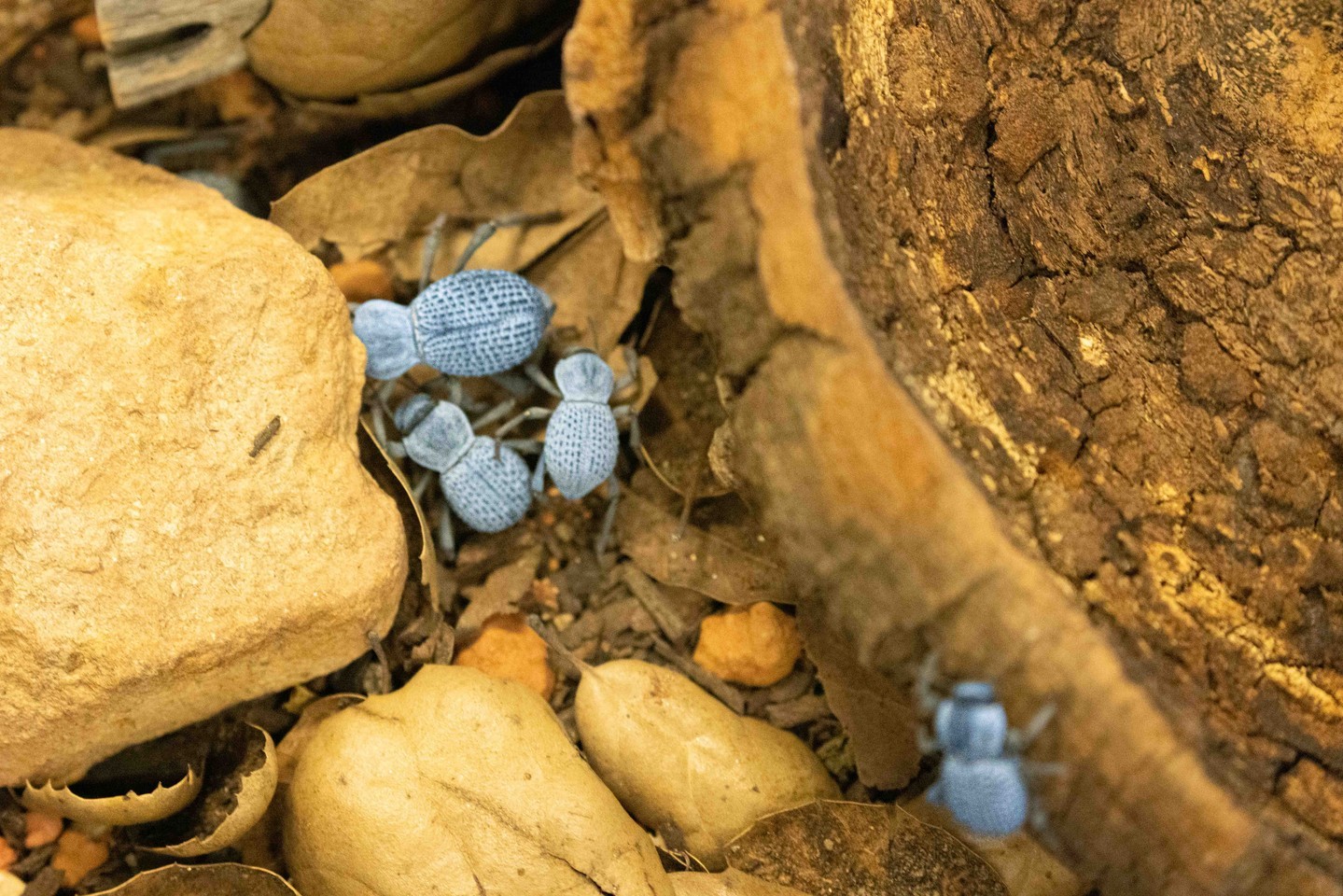- The significance of successfully raising a Blue Death Feigning Beetle to adulthood
- The beetle’s unique defense mechanism and its role in survival
- The distinctive blue coloring and its adaptive significance
- Challenges and successes in breeding programs for Blue Death Feigning Beetles
- The importance of conservation programs for the species
Reaching adulthood is a significant milestone for any organism, but achieving this with a Blue Death Feigning Beetle represents an extraordinary accomplishment. These beetles are notoriously difficult to breed, which makes such successes at our Zoo particularly noteworthy. This article focuses on various aspects of the Blue Death Feigning Beetle, including its successful development to adulthood, its defensive behaviors, unique adaptations, and the broader implications of zoo-breeding programs for conservation.
Blue Death Feigning Beetles have a remarkable defense mechanism. When threatened, they roll onto their backs, mimic death, and release a chemical that deters potential predators like spiders. This behavior can be observed in both wild and captive beetles. The tactic is highly effective because many predators prefer live prey and lose interest in seemingly lifeless targets. Understanding and replicating these natural responses in a controlled breeding environment adds an extra layer of complexity and achievement to successfully raising these beetles to adulthood.
The blue coloration of the Blue Death Feigning Beetle is not just for show. It comes from the wax secreted by these beetles, creating a protective shield against dehydration and overheating in their native desert habitats. This wax reflects sunlight, effectively shielding the beetle from harsh environmental conditions. Such an adaptation is crucial for survival in their arid habitats. In captivity, maintaining proper environmental conditions to facilitate this defense mechanism is vital for the beetles’ health and overall well-being.
Breeding Blue Death Feigning Beetles presents numerous challenges. These beetles have specific habitat requirements and are highly sensitive to changes in temperature, humidity, and light. Replicating their natural conditions is a meticulous process. Despite these challenges, our Zoo’s success in breeding and raising a Blue Death Feigning Beetle to adulthood underscores the commitment to biodiversity and conservation. This achievement results from dedicated efforts in environmental control, nutritional management, and behavioral enrichment, paving the way for more sustainable populations in human care.
Conservation programs focusing on Blue Death Feigning Beetles are crucial. These programs aim to maintain genetic diversity, prevent extinction, and educate the public about the importance of these unique insects. By sharing knowledge and collaborating with other institutions, we can create a network of support to ensure the continued survival of these beetles. Raising awareness of the ecological significance and the conservation needs of Blue Death Feigning Beetles helps garner support for broader environmental initiatives.
In conclusion, successfully raising a Blue Death Feigning Beetle to adulthood at our Zoo represents an extraordinary achievement, reflecting the dedication and expertise of our team. Through detailed observation and an unwavering commitment to replicating their natural habitat, we have made significant strides in understanding these fascinating beetles. This success not only highlights the complexities of breeding such specialized insects but also underscores the importance of ongoing conservation efforts to safeguard their future.
*****
Source Description
🪲 One of our Blue Death Feigning Beetles has successfully reached adulthood! These beetles are notoriously difficult to breed, making this an amazing accomplishment here at the Zoo. Through breeding programs and sharing information, we can work towards a more sustainable population in human care! 🪲
Here are some of our favorite things about our Blue Death Feigning Beetles:
🌀 When threatened, the blue death feigning beetle rolls over on its back and plays dead. This deters predators, such as spiders, who prefer live prey.
🌀 The blue coloring comes from the wax secreted by these desert-dwelling beetles to create a protective shield against dehydration and overheating.


